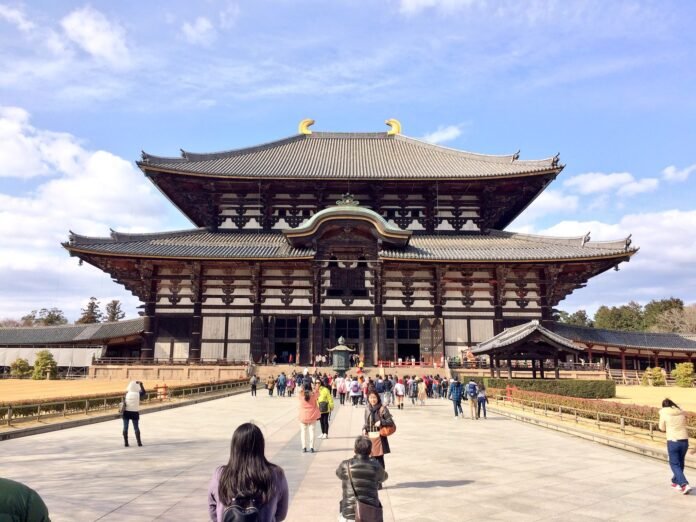Moving to Japan to study is an exciting step. But before you settle into campus life, one thing you cannot afford to ignore is health insurance. Why? Because unlike travel insurance that you might buy for a short holiday, health insurance in Japan is a legal requirement for all students staying longer than three months. And beyond the legal side, it’s your safeguard against unexpected medical costs in a country where high-quality care is accessible—but not free.
This guide walks you through the top 10 health insurance options for international students in Japan in 2025, with clear explanations of what each one covers and how to choose the right mix for your situation.
✅ Why Health Insurance Matters for Students in Japan
Japan has one of the world’s best healthcare systems, combining modern hospitals with community-based clinics. But even routine care—like a dentist visit or prescription medication—can be costly without insurance. That’s where health insurance steps in.
Here are a few things every student must know:
- Legal requirement: If you stay in Japan longer than three months, you must join the National Health Insurance (NHI) system. Enrollment is not optional.
- Affordable coverage: NHI typically covers 70% of most medical expenses. You’ll pay the remaining 30%.
- Additional protection: Many universities also require accident insurance for on-campus activities. Students often buy private or global insurance for wider coverage, including emergency evacuation or treatment outside Japan.
- Where to register: NHI registration happens at your local city hall, within 14 days of arrival. Bring your residence card and passport.
With these basics covered, let’s explore your top options.
🏆 Top 10 Health Insurance Options for International Students in Japan
1. National Health Insurance (NHI)
This is the foundation of student healthcare in Japan. Without it, you cannot legally remain for study beyond three months.
- Coverage: About 70% of medical expenses, including doctor visits, hospitalization, dental, and prescriptions.
- Premiums: Students typically pay 2,000–3,000 yen per month in their first year, since fees are based on prior income (and most students don’t have local income).
- Why it matters: It ensures affordable access to Japan’s healthcare system.
If you only choose one type of insurance, this is it. Everything else builds on top of NHI.
2. Gakkensai Personal Accident Insurance
Many universities automatically enroll students in this plan.
- Coverage: Accidents during classes, research, or campus activities. Includes disability and death benefits.
- Cost: Often included in your student fees.
- Why it matters: If you fall during a lab experiment or get injured during sports training, this protects you.
It’s not a replacement for NHI but a supplement that covers accidents in academic settings.
3. Comprehensive Insurance for Students’ Lives (Gakkensai Coupled)
This expands on Gakkensai and is often bundled by universities.
- Coverage: Adds liability, death, disability, and rescue costs (for example, search and rescue during fieldwork).
- Why it matters: It’s peace of mind for students doing research outdoors or in high-risk environments.
Think of it as the extended warranty of campus accident insurance.
4. GeoBlue Student Navigator
GeoBlue is popular among U.S. students studying abroad.
- Coverage: Both U.S. and Japan, plus global coverage. Options for different deductibles.
- Why it matters: If you’re American, your parents’ health plan might not cover you overseas. GeoBlue bridges that gap with strong networks.
This plan is particularly useful if you plan to travel frequently between the U.S. and Asia.
5. IMG Student Health Advantage
International Medical Group (IMG) designs this specifically for long-term students.
- Levels: Standard and Platinum, depending on how much coverage you need.
- Coverage: Inpatient and outpatient care, prescriptions, and medical evacuation.
- Why it matters: Students in multi-year programs often prefer IMG because it works across borders.
If you see yourself doing internships outside Japan during breaks, IMG gives flexibility.
6. WorldTrips Student Secure
This is another international option with flexible terms.
- Coverage: Medical care, dental treatment, emergency evacuation. Valid in over 130 countries.
- Flexibility: Short-term or multi-year enrollment.
- Why it matters: If you expect to travel often, Student Secure keeps you covered worldwide.
It’s also accepted by many Japanese universities as supplementary insurance.
7. Cigna Global International Student Health
Cigna is a well-established name worldwide.
- Coverage: Flexible international coverage, including optional U.S. care.
- Features: Large hospital networks, strong multilingual support.
- Why it matters: If you want a familiar global provider with reliable customer service, Cigna is a safe bet.
It’s more expensive than NHI alone but adds serious protection.
8. Allianz Care International Student Plan
Allianz is another global giant with plans for international students.
- Coverage: Inpatient, outpatient, evacuation, plus wellness services.
- Networks: Large direct billing network across Japan and worldwide.
- Why it matters: It’s designed for students outside their home country, making it easy to access care without paperwork hassles.
Allianz is particularly strong for those who want to avoid paying upfront and claiming later.
9. AXA International Student Health Plan
AXA offers a comprehensive student plan that goes beyond the basics.
- Coverage: Surgeries, inpatient care, specialist visits, and mental health support.
- Why it matters: Mental health services are not always robust in public insurance systems. AXA helps fill that gap.
Students who anticipate needing specialist care will benefit most from AXA.
10. Pacific Prime StudentCare / Japan
Pacific Prime acts as a broker and provider of localized student plans.
- Coverage: Integrates NHI with private accident or global coverage.
- Why it matters: If you want a customized mix—public insurance plus private protection—this is a good option.
It helps bridge the gap between Japan’s public system and international coverage needs.
Key Notes for Students
Health insurance in Japan isn’t just about signing papers. It requires planning and understanding how different systems overlap. Here’s what you need to keep in mind:
- Mandatory registration: Apply for NHI at your local ward or city hall within 14 days of arriving in Japan. Bring your residence card and passport.
- Cost calculation: NHI premiums are based on prior income. For most first-year students, that means very low payments.
- University rules: Many schools require proof of accident insurance in addition to NHI.
- Private add-ons: If you travel abroad, consider adding an international plan (like GeoBlue or Allianz).
- Evacuation coverage: Japan’s NHI won’t cover medical evacuation to your home country. Private plans do.
📝 How to Choose the Right Mix
Here’s the practical strategy many students use:
- Start with NHI. It’s mandatory and affordable.
- Add Gakkensai and Comprehensive Insurance if your university requires it. This will often be automatic.
- Consider private or international insurance if you travel abroad, want global coverage, or need services NHI doesn’t provide (like evacuation or mental health support).
- Check overlap. Avoid paying twice for the same coverage. For example, don’t buy an international plan that duplicates NHI’s 70% coverage unless you need broader protection.
- Ask your university. Every school has slightly different requirements.
🌍 Why a Combined Approach Works Best
If you’re staying only one semester, NHI plus university accident insurance may be enough. But if you’re in Japan for two or more years, combining NHI with a private international plan gives you the best balance: affordable local care plus global protection.
For example, NHI covers 70% of your dental care. But if you’re traveling home during summer and need treatment, NHI won’t help you outside Japan. An international plan ensures continuity.
Final Thoughts
Health insurance may not be the most exciting part of moving abroad, but it’s one of the most critical. Japan’s system makes sure students can access high-quality care at low cost. The National Health Insurance (NHI) program is the backbone. University accident insurance fills the gaps. And global plans provide the safety net for what NHI cannot cover—like worldwide emergencies or evacuation.
The smartest students think of insurance not as a fee, but as protection that keeps their studies on track. So start early. Register for NHI as soon as you arrive, confirm what your university requires, and then decide if you need an international layer. With the right mix, you’ll never have to worry about a sudden illness or accident getting in the way of your education in Japan.
References:
- Embassy of Japan in the USA. (2024). Living in Japan: Health insurance system. Retrieved October 19, 2025, from https://www.us.emb-japan.go.jp/
- Japan Student Services Organization (JASSO). (2024). Guide to study in Japan: Health and safety. JASSO. Retrieved October 19, 2025, from https://www.jasso.go.jp/en/
- Ministry of Health, Labour and Welfare, Japan. (2025). National Health Insurance system overview. Government of Japan. Retrieved October 19, 2025, from https://www.mhlw.go.jp/
- The University of Tokyo. (2025). Health insurance and medical care for international students. UTokyo International. Retrieved October 19, 2025, from https://www.u-tokyo.ac.jp/en/
- Kyoto University. (2025). Insurance for students. Kyoto University International Office. Retrieved October 19, 2025, from https://www.kyoto-u.ac.jp/en/
- Tohoku University. (2025). Student life: Health and accident insurance. Tohoku University International Support Center. Retrieved October 19, 2025, from https://www.insc.tohoku.ac.jp/
- GeoBlue. (2025). Student Navigator plan details. GeoBlue International Student Insurance. Retrieved October 19, 2025, from https://www.geobluestudents.com/
- International Medical Group (IMG). (2025). Student Health Advantage. IMG Global. Retrieved October 19, 2025, from https://www.imglobal.com/
- WorldTrips. (2025). Student Secure insurance plans. WorldTrips. Retrieved October 19, 2025, from https://www.worldtrips.com/
- Cigna Global. (2025). International student health insurance. Cigna. Retrieved October 19, 2025, from https://www.cignaglobal.com/
- Allianz Care. (2025). International student plans. Allianz Partners. Retrieved October 19, 2025, from https://www.allianzcare.com/
- AXA Global Healthcare. (2025). Student health insurance. AXA. Retrieved October 19, 2025, from https://www.axaglobalhealthcare.com/
- Pacific Prime. (2025). StudentCare Japan insurance. Pacific Prime Insurance Brokers. Retrieved October 19, 2025, from https://www.pacificprime.com/


